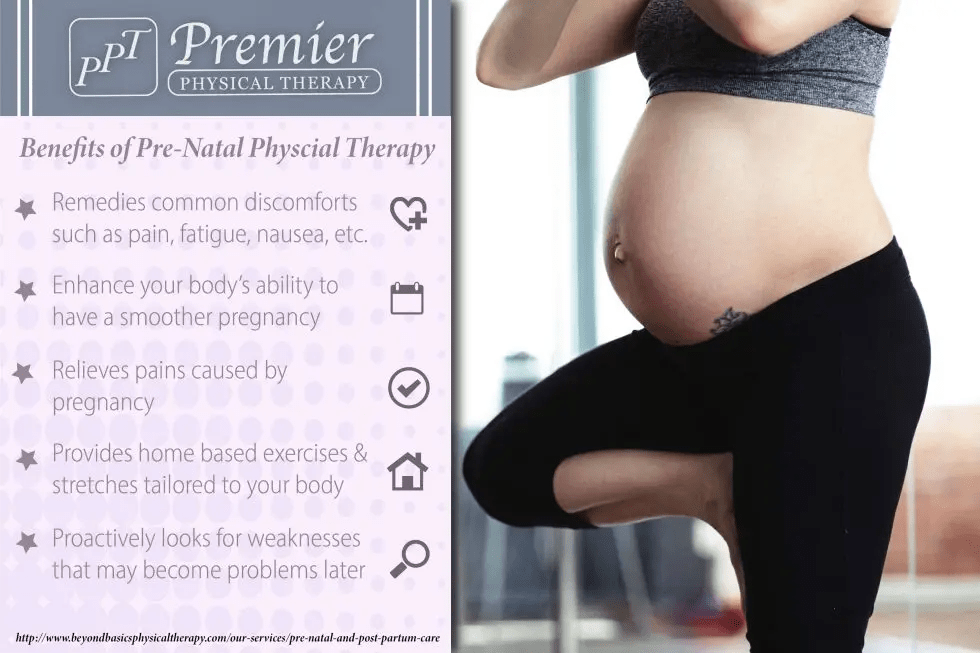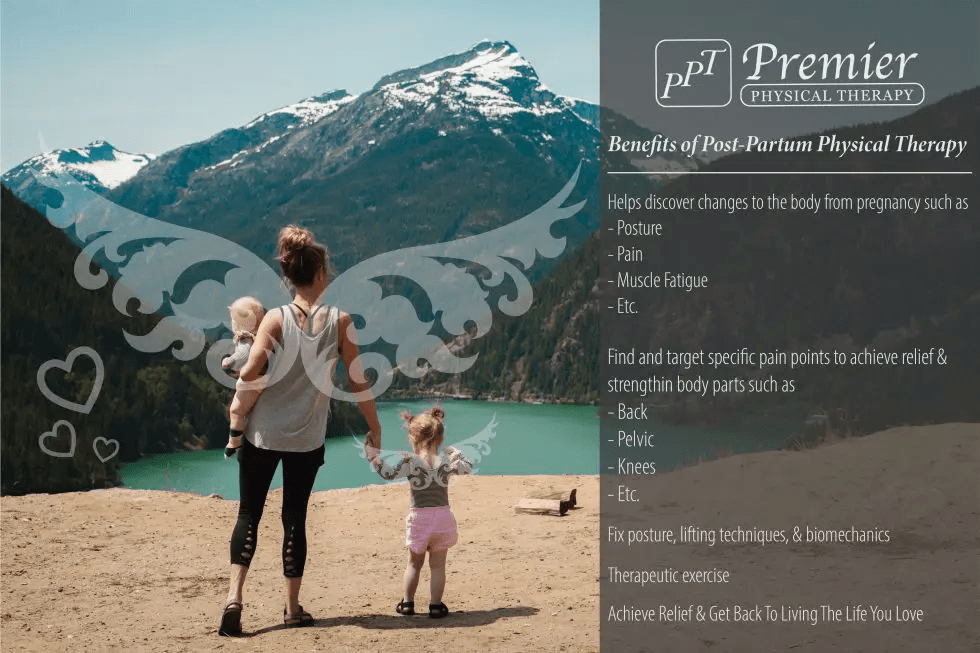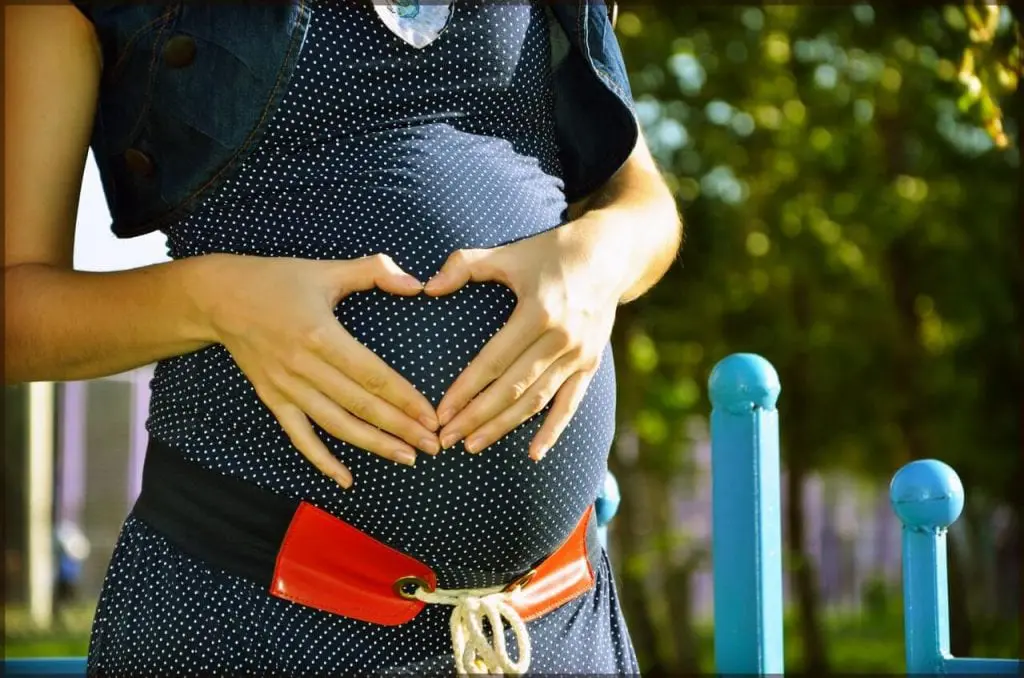Along with nausea, swollen feet, and late-night food cravings, people often underestimate the burden of lower back pain that affects over two-thirds of all pregnant women. The good news is- this typically means the baby is growing! There are times, however, when the lower back pain can be serious and life-threatening to the baby. Because of this, it is important to listen to what your body is telling you and be knowledgeable about lower back pain in pregnancy, including knowing when to talk to your doctor.
Types of Pregnancy Back Pain
Back pain can start anywhere from the first trimester to the third. Lower back pain in pregnancy usually falls into one of two categories:
- Lumbar Pain– located above the center of the waist in the center of the back. This type of pain is caused from sitting, standing, and repetitive lifting. It is sometimes felt in the legs and feet.
- Posterior Pelvic Pain– far more prevalent than lumbar pain. This pain affects the back of the pelvis and is felt below or to the side of the waistline. Posterior pelvic pain is caused from climbing stairs, running or walking, lifting and twisting, or standing from a sitting position.
What Causes Lower Back Pain in Pregnancy?
There are several factors that can come into play when it comes to lower back in pregnancy. First and foremost, the mommy-to-be is gaining weight! As a reminder, here is how much weight is healthy for our pregnant moms to gain:
- If Underweight: 28-40 pounds
- Healthy: 25-35 pounds
- If Overweight: 15-25 pounds
- Obese: 11-20 pounds
1. Changes in posture and hormones: Biomechanics refers to our body’s posture and the way our joints move. When a woman becomes pregnant, her body’s biomechanics will change throughout the entire pregnancy. In the second half of pregnancy especially, a woman’s center of gravity changes. Hormones are relaxing the ligaments in the joints of the pelvis to prepare for childbirth, causing lower back pain.
2. Weight gain is the leading cause of lower back pain in pregnancy since all the extra weight must be carried at the spine.
3. Believe it or not, stress can also be a contributing factor in lower back pain in pregnancy. The emotional stress can not only cause pain, but full-fledged back spasms.
4. Sciatica, which is back pain due to an irritated sciatic nerve, is another possible, but rarer, cause of lower back in pregnancy- especially in the third trimester and in women who had chronic back pain prior to pregnancy.
When to Call Your Doctor
Although lower back pain affects 50-80% of pregnant women, there are times when lower back pain can be serious to both mom and baby’s health. Back pain can be a sign of preterm labor or a urinary tract infection.
A woman should contact her doctor if she experiences lower back pain in pregnancy for longer than two weeks. A doctor should be notified immediately for symptoms such as vaginal bleeding or irregular discharge, burning during urination, feeling pins and needles or numbness in limbs, recurring cramping pains, and severe, abrupt pain.
In rare cases, lower back pain can be a sign of pregnancy-associated osteoporosis, which is a condition where a woman’s bones become extremely fragile in pregnancy and can break easily. Women who have low bone density before they become pregnant may be more susceptible to the condition.

How to Relieve Pregnancy Back Pain
- Pay attention to posture – stand up straight and tall, hold the chest up high, keep shoulders back and relaxed, and keep the knees relaxed. Only use chairs with good back support
- Be physically active every single day – with a doctor’s recommendation light exercise and stretching will keep the back strong. Aquarobics (water exercise) is a popular way for pregnant women to exercise since our bodies naturally feel lighter in the water
- Use appropriate gear- wear shoes with good arch support. Both heeled and completely flat shoes can equally cause lower back pain. Some women find it beneficial to wear a maternity support belt
- Be careful lifting- to avoid straining the lower back at all times, not just during pregnancy, always squat and lift the object with the legs. Bending at the waist and lifting at the back can result in a serious back injury
- Do not sleep on the back- it’s best to sleep on the side with one or both knees bent. Many pregnant women use pregnancy pillows, which supports the back, wraps around the body, and tucks under the abdomen
- Practice taking deep breaths- directed deep breathing (slowly inhaling through the nose and exhaling through the mouth) will help get the breath into the side rib cage and lower and middle back, relieving tightness in those muscles
- Try pelvic floor physiotherapy- this is an all-natural way to relieve back pain due to tight pelvic muscles. A physiotherapist can massage the pelvic floor through the vagina which also reduces the risk of tearing during delivery
- Get prenatal massages- relieves tight muscles and stress, while also improving range of motion. Heat and cold massages are helpful for short-term relief
- Consider alternative therapies such as acupuncture, chiropractic services, or physical therapy through direct access
- Get plenty of sleep and sleep on a firm mattress
Ask your doctor about taking a safe over-the-counter pain reliever such as Tylenol. Anti-inflammatories such as ibuprofen, Aspirin, Motrin, Advil, and Aleve are typically not advised because they can be harmful to the development of the baby’s heart
Top Stretches for Easing Pregnancy Back Pain
Lower Backache:
![]()
- sit on your heels with your knees slightly apart
- lean forward towards the floor with your elbows resting on the ground in front of you
- stretch your arms forward until you feel a comfortable stretch. Hold for 30 seconds
Middle Backache:
![]()
- get on your hands and knees, drawing in the lower stomach
- tuck your tail under and hold for 30 seconds
- softly lower your back down to a comfortable position
Upper Backache:
![]()
- sit up straight on a firm chair, tucking your stomach muscles in
- lacing your fingers together, lift your arms over your head
- straighten out your elbows and turn your palms upwards until you feel a comfortable stretch
- hold for 30 seconds
Sometimes the back pain that a pregnant woman experiences is inevitable and very little can be done to provide long-term relief. Here’s the good news- the body will naturally go back to normal shortly after childbirth. Physical therapy may be recommended if back pain is still severe two weeks after giving birth.

*Postpartum Back Pain*
Women who experience back pain in pregnancy may also experience postpartum back pain after the baby is born, which is a normal sign that hormones are starting to re-regulate. This can last at least an additional six weeks. Breastfeeding moms may experience postpartum back pain for even longer, since pregnancy hormones continue to cycle through the body.
Lower Back Pain and Core Weakness After C-Section
Women who deliver their babies via c-section often have less pelvic floor problems than women who deliver vaginally but make up for it by experiencing weakened abs.
How to fix- do not do any movements that involve sit-ups or abdominal crunches. We naturally use our abs just to get out of bed. Try to roll to the side first and push yourself up. The following exercises are also recommended:
- Scooping- lay on your back with a pillow wedged under your knees. Inhale through your nose and as you exhale, squeeze your stomach muscles and try to pull your belly button into your spine.
- Heel slides- Put your back flat against the floor and bend your knees. Practice contracting your core and pelvic muscles. Then slide your right heel along the floor away from you, straightening your right leg. Bend your right knee back again. Alternate legs and make sure this is done on hard flooring (not carpet).
Back Pain from Lifting the Baby to Breastfeed
As we’ve learned, growing and birthing a baby affects a woman’s posture. After childbirth, new moms must adjust to lifting the baby, breastfeeding, leaning over cribs, and constantly maneuvering car seats, strollers, and heavy diaper bags. The following tips may help to subside postpartum back pain:
- Lower the side of the crib instead of leaning over the crib, if possible
- Use proper support when feeding your baby. Boppy pillows are a popular breastfeeding pillow that make the various breastfeeding positions more comfortable for mom and baby
- Keep shoulders relaxed while breastfeeding and try to avoid shrugging your shoulders when lifting the baby
- Do not look down at the baby the entire time you are breastfeeding. This is not good for posture and can strain your neck, causing more back pain
Managing Your Lower Back Pain During Pregnancy
If you need help managing your lower back pain, the first step is getting the right medical team of professionals on your side.
That’s where we come in. We understand lower back pain during pregnancy may be difficult to handle. We’ll identify the causes of your pain through a complimentary free screening before arranging the right kind of physical therapy for you.
Click here to make an appointment at Premier Physical Therapy or request a free screening with one of our physical therapists by filling out the form below. Take a look at our various physical therapy locations, discover the right treatment tailored for you and achieve relief from lower back pain and enjoy the miracle of pregnancy pain-free!
.png)



